As a fan-favorite catch for seasoned anglers, the barracuda is a fascinating saltwater predator. While quite the exciting fish, these massive fish hide their many teeth behind a giant jaw and should be handled with precaution.
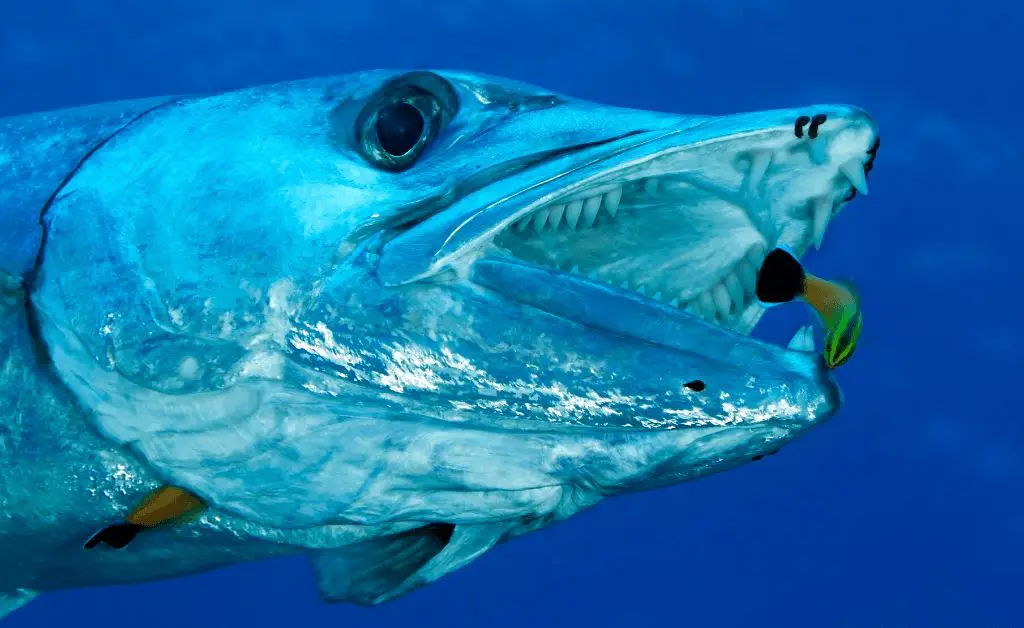
Barracuda teeth are separated between two different sets of teeth. One inner row of giant teeth and one outer row of more minor but sharper teeth. These massive pointers can easily injure someone if not handled with care and should be treated as the potential weapon these predators boast.
These massive carnivores can pierce through flesh and sometimes even bone. Today, we will discuss some precautions you should take when dealing with these fish and tackle some exciting facts.
How Many Teeth Do Barracuda Have?
Barracuda contain different amounts of teeth depending on their size.
Enormous barracuda can contain as many as over 200 teeth inside their mouth. Conversely, a smaller barracuda may only have a little over 100 teeth. While the exact amount of teeth can vary, most healthy barracuda have between 100 and 210 teeth.
These teeth are separated between 2 different rows inside the barracuda’s mouth. A barracuda’s underbite will have an inner layer of teeth on the bottom of its mouth and an outer layer of teeth on the top.
A barracuda’s outer row of teeth consists of small, saw-like teeth along its upper jaw that are packed close together. These teeth are small and barely noticeable compared to the inner row of large teeth. The majority of a barracuda’s teeth are located along this outer row.
A barracuda’s inner row of teeth is much larger than its outer counterparts, although not as sharp. The inner row of barracuda teeth is meant to hold prey fish rather than chew them for digestion. Only a tiny percentage of barracuda teeth are located on the inner layer, usually less than 20%.
How Big Are Barracuda Teeth?
Full-grown barracuda have an average teeth length of 0.5-1 inch for their large, fang-like inner teeth. A large barracuda of over 6 feet can contain teeth as long as 1.5 inches.
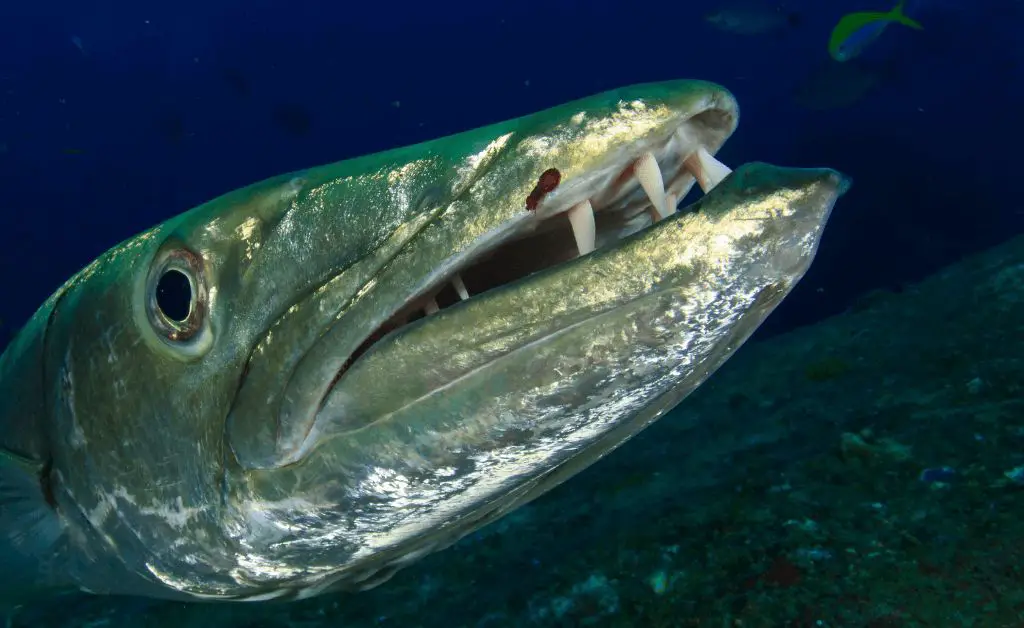
Can Barracuda Hurt Humans?
Barracuda are large saltwater predators that can undoubtedly harm humans if provoked. Barracuda has often been compared to piranha, which makes sense considering their bevy of similarities regarding biting ability.
Barracuda, much like piranhas, can easily tear through flesh. Much more giant barracuda are easily able to chew through bone. These fish can be dangerous and should be handled with care when reeled in.
Do Barracudas Attack Humans?
Like most other predator fish, a barracuda is not interested in attacking humans. Contrary to what shark media might tell people, most predator fish don’t care about humans.
Barracuda have incredibly sharp teeth and certainly can harm a human. Still, they don’t have the incentive to do so. Barracuda are not naturally threatened by humans, and they do not view us as prey.
Over the last century, less than 50 recorded instances have had a barracuda intentionally go after a human in the water. These attacks mainly occurred in areas of murky water where a barracuda likely mistook a human for a large prey fish.
What Is The Bite Force of Barracuda Fish?
The great barracuda has jaws full of razor-sharp teeth that can cut its food in half. These massive molars can bite with a force of 60 to 70 newtons.
How to Handle a Barracuda
Barracuda are known predators and can easily bite through someone’s arm if provoked and mishandled. Anglers will want to follow proper procedures when fishing for barracuda to avoid a significant injury.
When you catch a barracuda, the first and most important thing to know is not to put your hands near its mouth. You should instead bring a heavy-duty pair of pliers to be able to unhook from their jaw and prevent any biting mishaps.
On top of taking your fishing hook out, you will probably want to take a photo with your fresh catch after reeling it in. Make sure you hold the fish properly when holding it. It would help if you gripped the barracuda tightly, as you do not want them to slip out and hurt anyone.
Barracuda should be held firmly behind their head and not be gripped near their jaw.
Last but not least, make sure to always use a wire leader when fishing for barracuda. Barracuda boast strong teeth, and your leader should be light enough to go undetected but need to be strong enough to hold onto the fish’s grip without snapping.
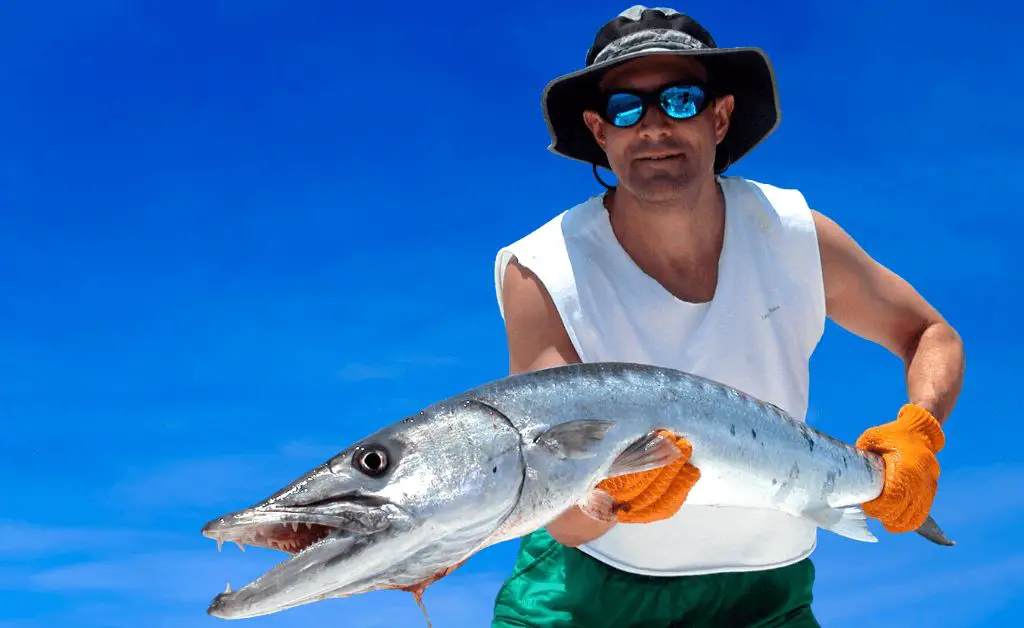
Barracuda Fishing Tips
Barracuda can be tricky to catch, but some quick tips may assist you in your latest fishing venture.
The best lures for barracuda fishing appear to be prey fleeing through the water. Barracuda are predator fish and are most likely to chase after your line if it replicates local game. Highly colorful lures with a fast retrieve are the best means of copying this type of prey.
Another thing to look out for while fishing for barracuda is your location. Barracudas are often found in channels, near inshore structures, and saltwater flats.
Barracuda often school in shallow waters during cooler weather, which makes it easier to cast targets within eyesight. Conversely, warmer weather means that barracuda will swim more into deeper waters.
Lastly, don’t be afraid to move around when fishing for barracuda. These fish will rarely bite a line again after failing the first time, so it is usually better to move on to a new area if you have an unsuccessful catch in the site you are in.
Can Barracuda Bite Through Fishing Line?
While the exact strength of a barracuda’s jaw has a bit of variance, barracuda can bite through a lot of different fishing lines. Fishermen looking to pull up one of these behemoths should ensure they come equipped with the proper fishing line for their catch.
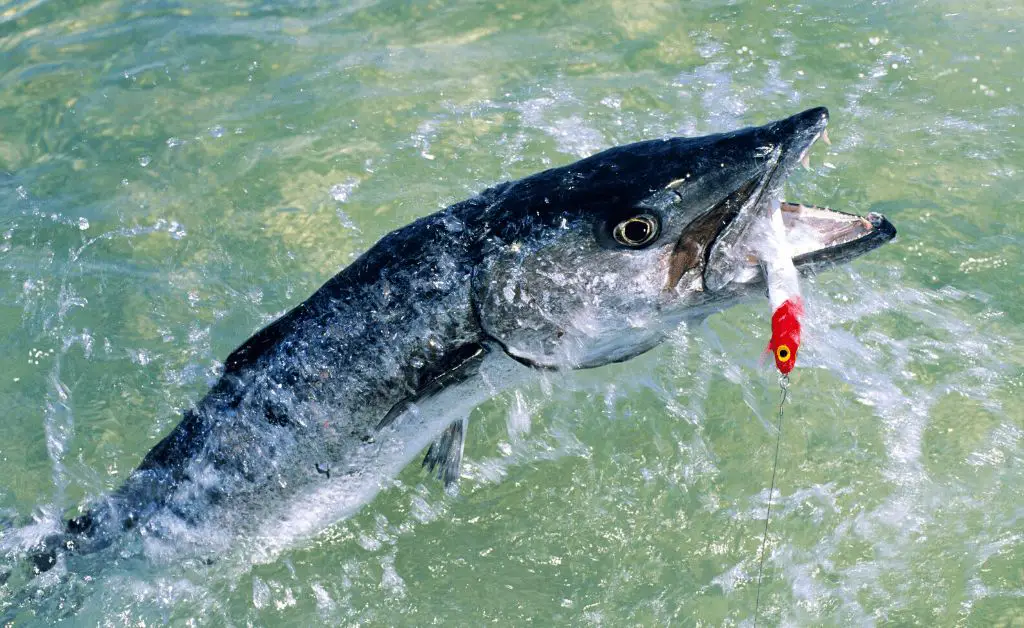
Monofilament Line
Monofilament fishing line is made from a single fiber of plastic material. These fishing lines are terrific for ease of use, stretch, and catching surface-level fish with a lot of shock strength. But, when confronted with a barracuda fish’s teeth, these lines will bust.
Braided Line
Unlike monofilament lines, braided lines are made of multiple fibers of plastic material. Braided lines, as the name would imply, are certainly more robust and thicker than their mono counterparts.
Braided lines may be more robust than monofilament lines but will still snap in the face of a barracuda’s heaping jaw.
Fluorocarbon Line
The fluorocarbon line shows excellent durability in the face of the elements. These fishing lines are highly resistant to wear and tear from water and frequent use.
That being said, fluorocarbon lines are not the strongest when it comes into contact with force or for holding heavier fish. These lines may be great for long-term use and cost-efficient, but they are not the best choice for barracuda fishing, as they will be snapped off by the predator’s jaw.
Single Strand Line
Single-strand fishing lines are the most potent form of fishing lines and should be used to catch barracuda. These fishing lines are made of stainless steel and are the most substantial option when dealing with predator fish or sharp teeth.
These lines are best equipped for a heavy catch and should be brought to any outing involving large predator fish.
- Do You Need An Indicator For Nymph Fishing? - November 16, 2023
- Fishing Safety Tips For Families - September 25, 2023
- What Is The Best Time To Night Fish At A Lake? - September 18, 2023



![Can You Eat Barracuda Fish? [Is It Safe?] can you eat barracuda](https://irvinelake.net/wp-content/uploads/2022/09/barracuda-fishing-150x150.png)
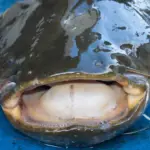

![Does Bass Have Teeth? [How to Handle Bass Safely] does-bass-have-teeth](https://irvinelake.net/wp-content/uploads/2022/09/does-bass-have-teeth-150x150.png)


